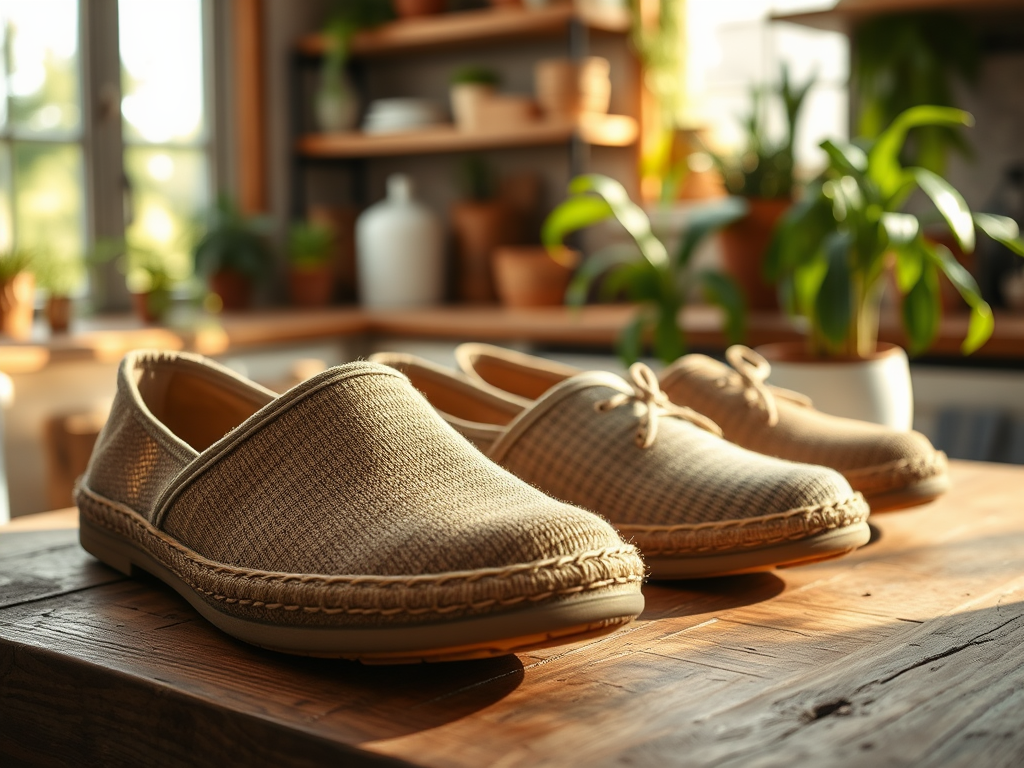In a world increasingly attentive to environmental issues, the quest for sustainable footwear has never been more relevant. More than just a fashion statement, the shoes we choose to wear can either contribute to the mounting landfill crisis or promote a greener way of living. As industries evolve and consumers become more educated, the need for eco-friendly options has risen; this is particularly true in the footwear sector, which has been known for its significant carbon footprint. Despite being an integral part of our daily lives, shoes are often overlooked in discussions about sustainability. Yet, the footwear industry is ripe for transformation, making it an exciting time for eco-conscious consumers. Whether you’re a devoted environmentalist or someone just beginning to explore sustainability, this guide will illuminate the myriad of options available to you.
Sustainable shoes bridge a vital gap between style and conscience. They represent a movement where fashion meets responsibility, offering consumers the chance to walk with purpose. By choosing sustainable footwear, you not only invest in quality but also champion brands that prioritize the welfare of our planet. As we dive deeper into the world of sustainable shoes, it’s important to understand why your choice in footwear matters. The environmental and ethical implications are vast, and they can profoundly affect our future.
Why Choose Sustainable Shoes?

The footwear industry is notorious for its environmental impact, from resource consumption to waste production. Understanding the benefits of opting for sustainable shoes can help conscious consumers make more informed choices. Sustainable footwear reduces the reliance on fossil fuels, minimizes carbon emissions, and preserves natural resources. By selecting shoes produced with eco-friendly materials, you contribute to a reduction in environmental degradation. Furthermore, ethical manufacturing practices ensure that those who make your shoes have fair working conditions and are treated with dignity. Let’s explore what makes sustainable shoes a worthy investment for both your wardrobe and the planet.
Environmental Benefits
Sustainable shoes are designed to minimize environmental harm. They often use renewable materials and aim to reduce pollution throughout the production process. This proactive approach mitigates issues like plastic waste, chemicals runoff, and harmful emissions that plague traditional manufacturing. For example, many brands opt for biodegradable and recyclable materials that return to the earth faster than conventional alternatives. By supporting these brands, you become part of a solution aimed at fostering a circular economy. A commitment to sustainable footwear can lead to considerable decreases in greenhouse gas emissions over time.
Ethical Manufacturing
Many sustainable brands prioritize ethical labor practices, ensuring fair wages and safe conditions for workers. Ethical production not only addresses environmental concerns but also emphasizes human dignity and respect. Consumers today are increasingly aware of where and how their products are made, demanding transparency from companies. Brands that adhere to fair trade principles create a positive ripple effect, benefiting entire communities. By choosing companies committed to ethical practices, consumers can inspire widespread change in industry norms. As awareness grows, more brands are stepping up to guarantee ethical treatment at every stage of production.
Materials that Make a Difference

The materials used in the production of sustainable shoes can greatly affect their overall impact. Below are some of the key materials to look for when making a purchase:
- Organic Cotton: Grown without synthetic pesticides or fertilizers, which is better for the soil and our health.
- Recycled Plastics: Helps reduce plastic waste, turning what would be trash into durable shoes.
- Plant-Based Leathers: Innovations like mushroom leather or pineapple leather provide animal-friendly options.
To further illustrate the impact of different materials, refer to the table below showcasing popular sustainable materials and their benefits:
| Material | Benefits |
|---|---|
| Recycled Rubber | Reduces waste and provides durability. |
| Eco-Friendly Dyes | Minimizes water pollution and chemical exposure. |
| Hemp | Fast-growing plant that requires little water and no pesticides. |
Leading Brands in Sustainable Footwear
Numerous brands have committed to sustainable practices in shoe production. Here are some notable names making strides in this area:
- Allbirds: Known for their eco-friendly designs, Allbirds uses materials like eucalyptus tree fiber and sugarcane in their shoes.
- Veja: Veja combines style with sustainability, producing shoes from organic cotton and wild rubber sourced from the Amazon rainforest.
- Native Shoes: Native prioritizes lightweight footwear made from eco-friendly materials, along with their commitment to recycling and sustainability initiatives.
How to Identify Sustainable Shoes
To make the best purchasing decisions, it’s important to know how to identify genuinely sustainable shoes amidst the greenwashing. Consider the following:
Understanding certifications can guide you in recognizing sustainable practices. Look for labels such as:
- Global Organic Textile Standard (GOTS): Ensures organic status and environmental and social criteria.
- Fair Trade Certified: Guarantees fair wages and ethical working conditions for workers.
- OEKO-TEX: Tests for harmful substances and promises sustainable production techniques.
Investigate a brand’s environmental and labor policies. Brands that openly share their production methods and sustainability goals are often more trustworthy. Look for transparency regarding supply chains and comprehensive sustainability reports.
Conclusion
As the demand for environmentally friendly products grows, sustainable shoes represent a significant shift within the fashion industry. By choosing sustainable footwear, consumers can contribute to a healthier planet while supporting ethical practices. The journey to sustainability does not have to mean sacrificing quality or style; on the contrary, it often leads to discovering innovative brands that redefine comfort and aesthetics. The choices made today can influence future production standards and inspire further innovation within the industry. As we navigate through our daily lives, each small step—like selecting sustainable shoes—can help us foster a culture of responsibility and care for our environment.
Frequently Asked Questions
- What are sustainable shoes made of? Sustainable shoes can be made from a variety of eco-friendly materials including recycled plastics, organic cotton, and plant-based leathers.
- Are sustainable shoes more expensive? While sustainable shoes may carry a higher price tag due to ethical production and materials, they often provide better durability and longevity.
- How can I care for my sustainable shoes? To maintain your sustainable shoes, follow the manufacturer’s care instructions, use environmentally friendly cleaning products, and repair rather than replace whenever possible.
- Do sustainable shoes have a similar style to regular shoes? Yes, many sustainable brands offer stylish options that compete with traditional designs, catering to diverse tastes and preferences.



